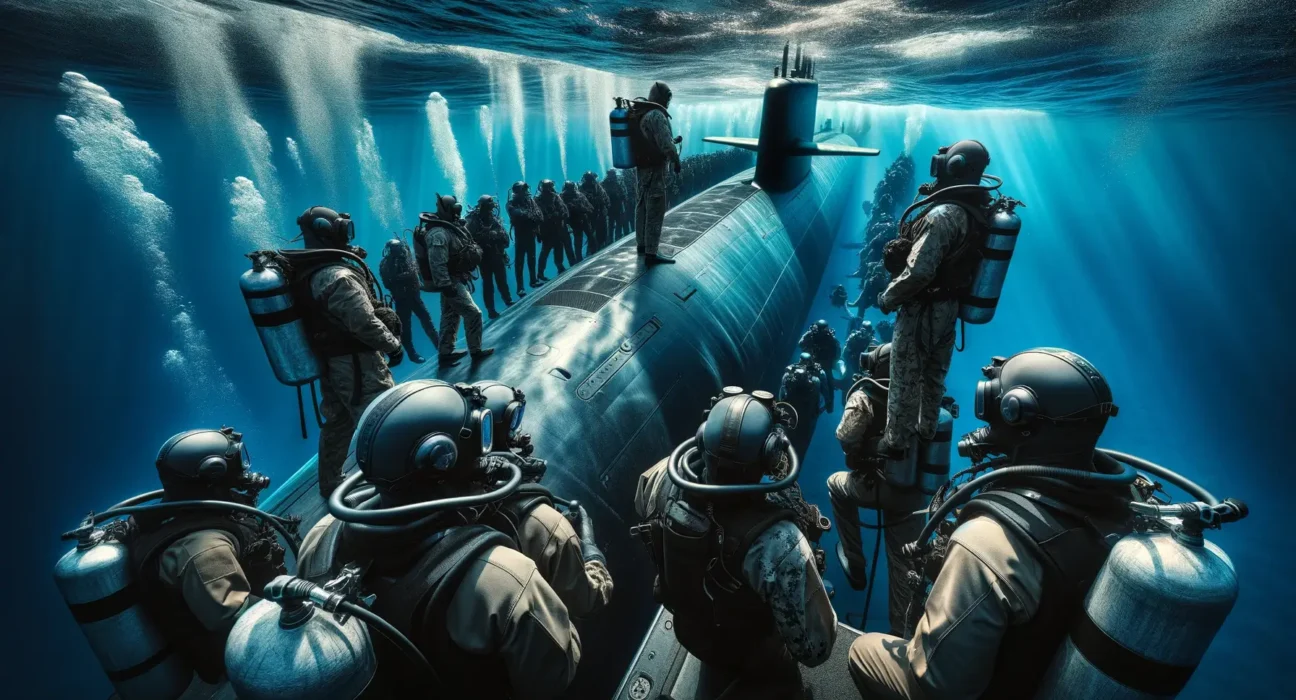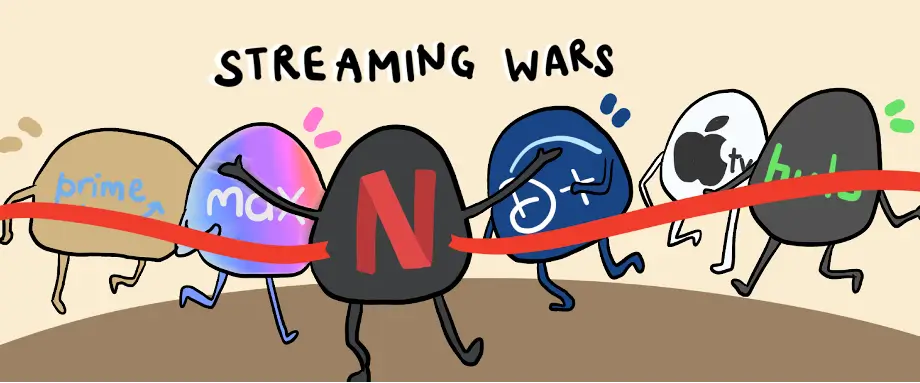The Navy SEALs are an elite and highly trained force in the United States. They are the most elite and highly trained special operations force, renowned for their flexibility and adaptability. From the deserts stretching from the Middle East to the dense jungles of Southeast Asia, Navy Seals Submarine Training Pacific have been involved in operations in nearly every environment you can imagine. Many people are unaware that among the most vital and hidden elements of SEALs’ training is underwater – specifically in the depths of the Pacific Ocean. Submarine training is an important part of SEALs training for missions requiring security, stealth, and ocean security.
In special missions, SEALs are often required to perform their duties in Earth’s most difficult and hostile conditions. Submarine training has been specifically created to train SEALs for the gruelling physical and mental strains of operating from submerged platforms, which is often focused on infiltration and reconnaissance, covert and sabotage. Due to the high risk and unpredictability of operating under the sea, training is essential for their survival and success when they are in combat.
The Crucial Role of Submarine Training in SEAL Operations
In the main, Navy Seals Submarine Training Pacific is to prepare for entry and exit of submerged submarines. It sounds easy. However, it requires extreme ability and precision. The most common scenario is a SEAL team being immersed in the sea through a submarine, diving to minimum depth, and moving towards their destination, often without surface.
Submarines’ role in SEAL operations is not overstated. Submarines offer a unique level of security and stealth in these high-risk missions. They can travel unnoticed within enemy waters, providing SEALs with the element of surprise and the capacity to hide for a long time. Submarine operations permit SEAL teams to enter hostile territory from the sea as it is typically the least anticipated entry point.
However, carrying out a successful operation from a submarine will require SEALs to undergo special training that guarantees their success in a difficult and sometimes dangerous environment. They must learn how to get safely out of submerged submarines and how to operate effectively in a marine environment, usually in the dark or extreme conditions.
The Pacific is the Ideal Training Ground
With its extensive and varied underwater terrain, the Pacific Ocean provides the ideal environment for training Navy SEALs preparing to go on submarine missions. The vast waters aren’t only remote and offer an array of environmental issues that replicate real-world conditions. The ocean’s vastness allows SEALs to train in places not viewed by the public. It provides them with the security necessary for operations at a high level.
The region also offers distinct features that make it a great training spot. For example, SEALs are trained to deal with difficult situations, like deep-sea diving and low-visibility environments. Furthermore, certain regions in the Pacific are characterized by underwater landscapes, caves, reefs and challenging currents, all of which resemble the kinds of situations that could be encountered in real-world missions.
Natural obstacles and isolation in the Pacific Ocean make it an ideal spot for these strenuous exercises. In this area, SEALs develop their skills to handle the physical elements of combat in the ocean and the mental endurance needed for the stress and isolation that comes with submerged operations.
More to Read: Shawnee Mission Northwest student due to heat Stroke
Submarine Training Techniques: Underwater Infiltration
Submarine training typically consists of the following steps to ensure that Navy SEALs can precisely complete critical tasks underwater. One of the fundamental abilities that SEALs have to learn is how to enter and exit the submerged vessel. This method, commonly called “dry suit diving,” is crucial, especially for working with colder water temperatures.
When SEAL teams reach the predetermined point, they leave the submarine before descending into the ocean. The exits are carefully planned since submarines, despite being technologically advanced, aren’t invincible to attacks from enemies. SEALs are trained to leave quietly from submarines, thus avoiding being detected by surveillance units or patrols.
The SEAL’s submarine training concentrates on the ability to carry out operations in extremely low visibility. SEALs are trained in total darkness and often have to navigate through muddy waters, using the senses of their hands and equipment instead of traditional sight. This highlights the importance of SEALs’ ability to adapt, which means that they can operate under the most challenging conditions.
Furthermore, SEALs are prepared to respond to emergencies that may arise when entering or exiting an underwater submarine. There are inherent risks when doing such delicate procedures, such as getting caught in underwater debris or encountering predators in the water. Therefore, SEALs must be trained to respond quickly in hazardous situations and ensure they can swiftly recover from accidents.
Psychological Resilience in the Depths
Submarine training doesn’t only focus on physical fitness, but it’s about mental endurance as well. The environment inside the submarine and the isolation of missions underwater can be mentally demanding. SEALs spend a lot of time submerged in darkness or completely isolated, and their mental strength is just as important as their physical conditioning.
The psychological strain from spending long periods submerged can be substantial. The inability to connect with the outside world, limited visibility, and the constant threat of a potential threat can cause stress. This is why Navy SEALs undergo intense mental training to be prepared for the rigours of these situations. Cognitive training often involves exercises designed to simulate the pressure and isolation experienced in real-world situations where SEALs must remain cool and calm under stress.
Training also focuses on establishing trust and cohesion among groups, as the capacity to depend on each other is vital for working in potentially hazardous environments. Teamwork is crucial in situations that require quick decision-making along with seamless collaboration.
Technological Advancements in Submarine Training
With the advancement of technologies for underwater Navy Seals Submarine Training Pacific, they are constantly changing their approach to the latest developments to boost their training. One of the main tools they have at their disposal can be the utilization of special diving equipment, such as Rebreathers, that allow SEALs to remain submerged for longer without releasing bubbles onto the surface.
Additionally, the advancements in underwater navigation systems and sonar technology have transformed SEALs’ methods to navigate the ocean’s depths. These advancements allow SEAL teams to conduct extremely precise missions in challenging and constantly changing underwater environments, ensuring that they remain alert to their surroundings and respond rapidly to any threats.
In addition, simulation technologies are increasingly used to replicate what happens underwater. Simulators allow SEALs to test their skills without being in the water, thus improving their response time and decision-making skills in simulation underwater environments. These tools are designed to complement training in physical fitness, ensuring that SEALs are prepared to handle any situation they encounter during an operation.
Real-World Applications and Impact
The significance of submarine training goes beyond the mere training exercises conducted in the Pacific. What we learn from this kind of training is directly applicable in the real world of SEAL missions. In the past, there have been countless instances when submarine-based missions have played an integral role in the mission’s success.
One of its most enticing applications is the possibility of gaining access to the enemy territory through the ocean. With submarines, SEALs could approach the shores of enemies and not be detected, initiating surprise attacks or collecting vital information with little risk. The submarine is an extremely useful tool used in SEAL operations, with instruction in the Pacific ensuring that SEALs are fully prepared to complete these missions easily.
Additionally, SEALs’ ability to perform effectively in submarine-based missions has led to the overall strategic advantage of military operations. Their ability to conduct precise covert operations has provided the U.S. Navy with a significant advantage in the international security environment.
Conclusion
The Navy SEALs’ training in submarines throughout the Pacific is a key element of their ability to carry out high-stakes and covert operations. They can navigate the challenges of operating below the sea’s surface through rigorous physical and mental training. The isolation, accuracy and teamwork required in this course make SEALs a formidable powerhouse in the world of special operations.
In a constantly evolving world of security, the SEALs’ rigorous training to handle submarine missions ensures they will remain among the most versatile and effective military forces worldwide. Be it for reconnaissance, sabotage or direct action, the abilities they acquire in the secluded, deep submerged waters of the Pacific will play a vital role in the SEALs’ capacity to accomplish any mission.






